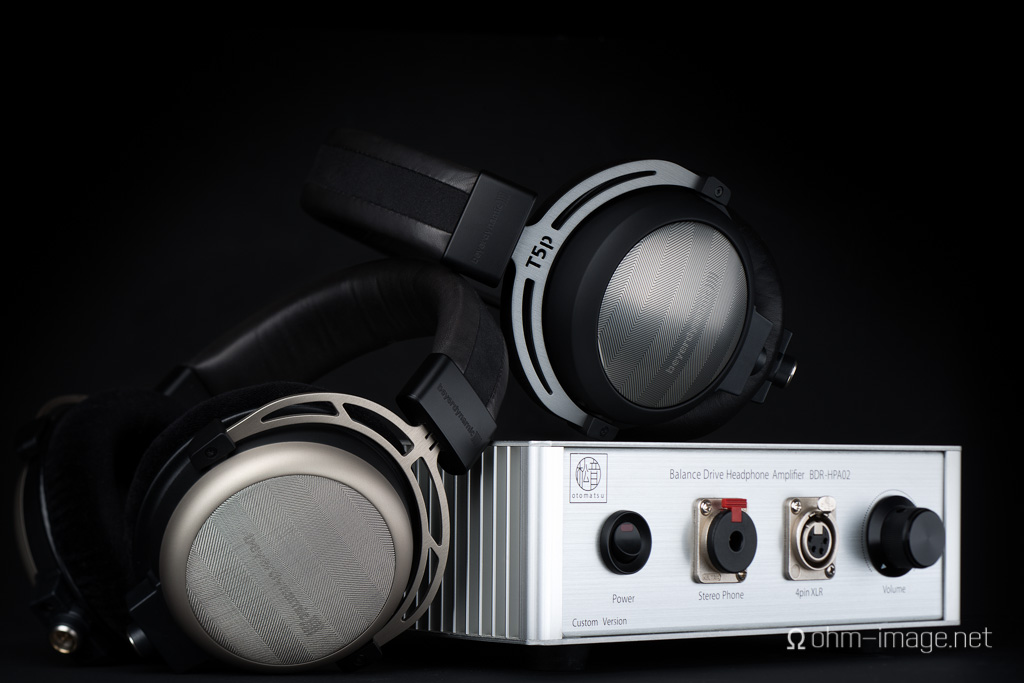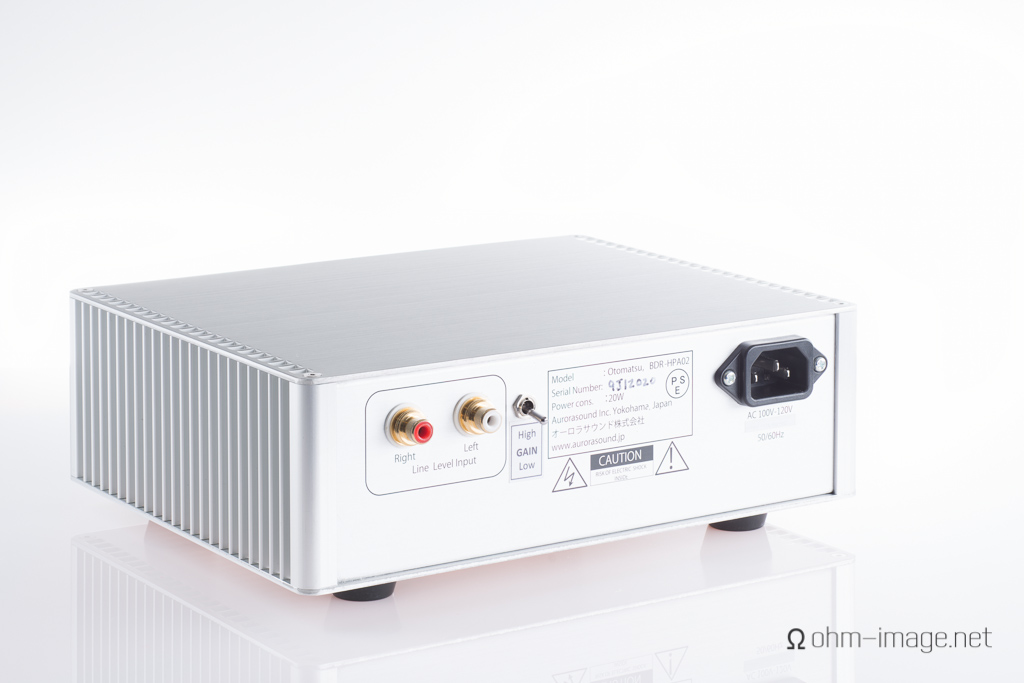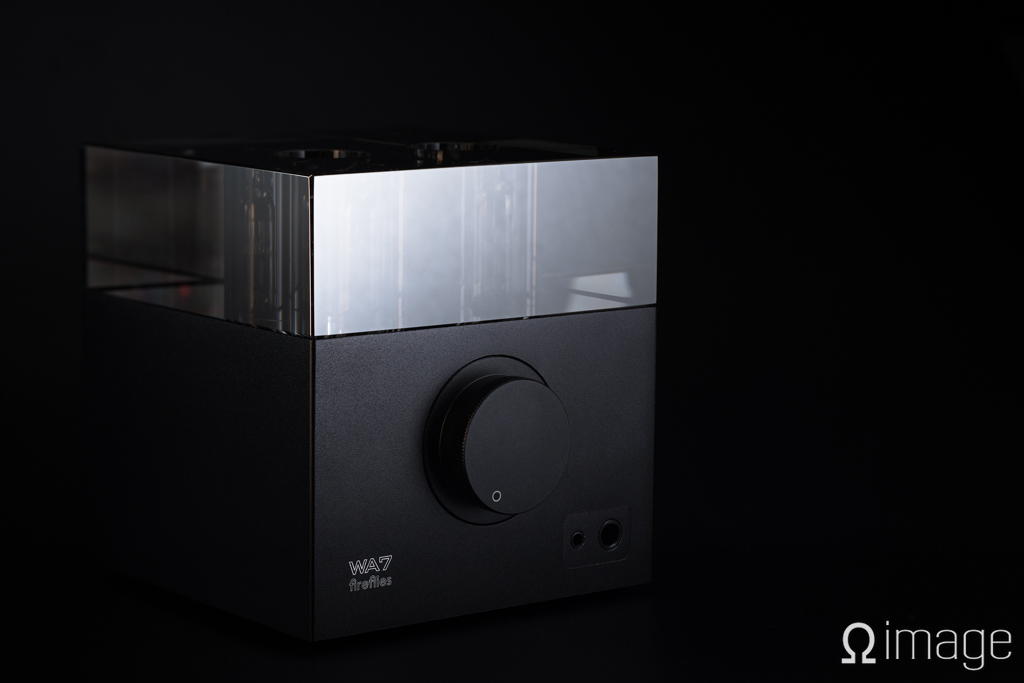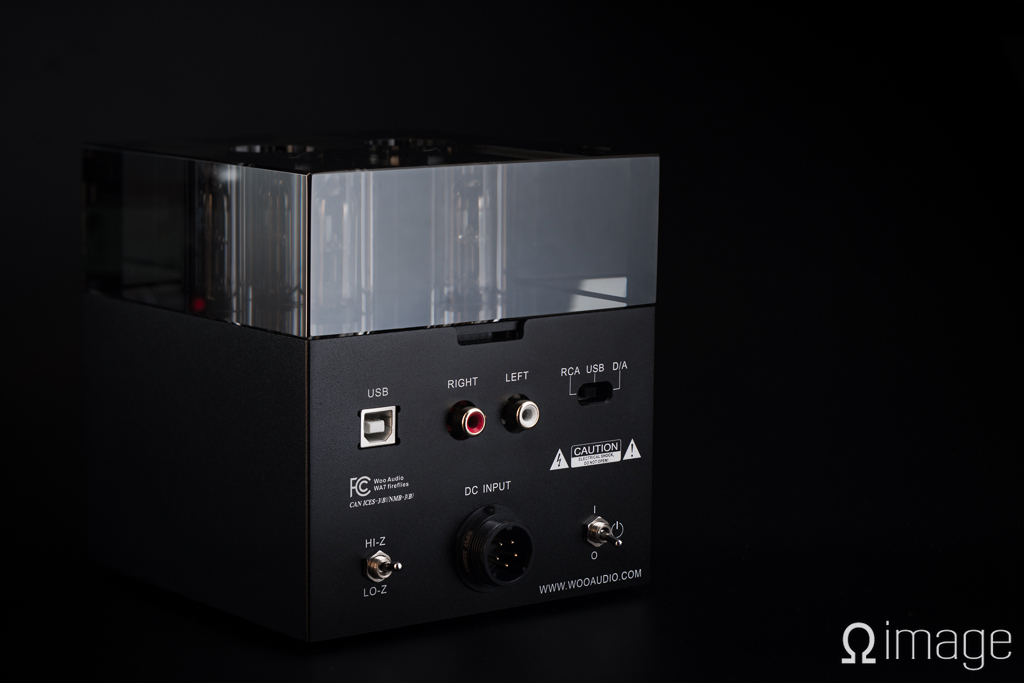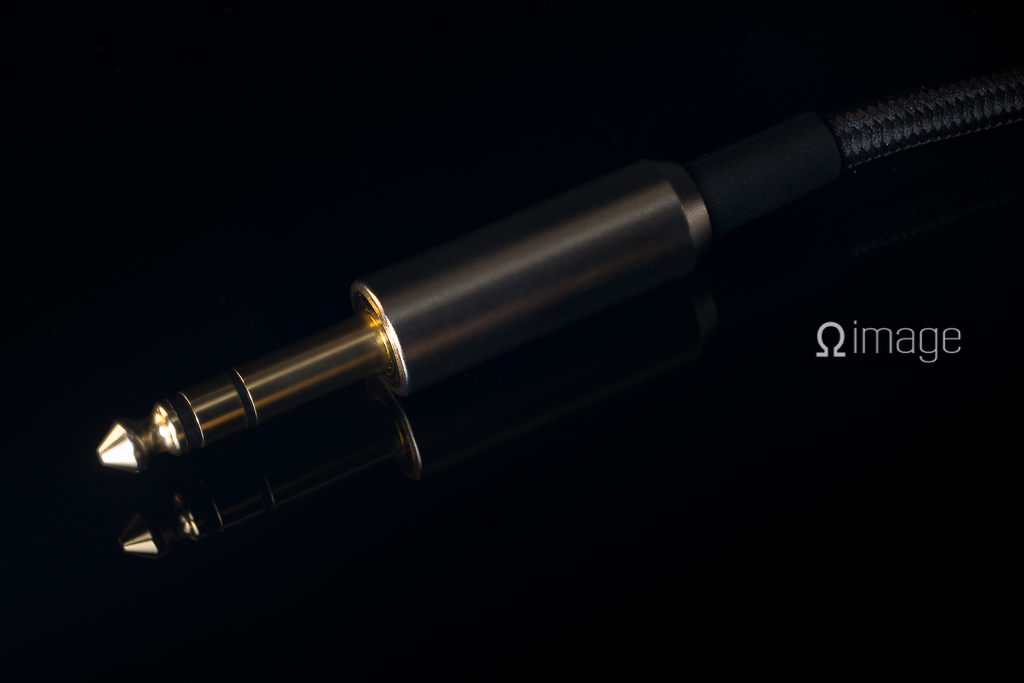Audio Technica's EU site explains things in short, sweet terms.
The New York Times touts audiophilese in Sennheiser Momentum review
“As with the Sennheisers, the bass is pumped up more than you will find on colorless audiophile headphones. And they do reasonably well on a variety of music, although the sound is a little muddy on intricate orchestral pieces, like those in opera and on movie soundtracks.”
Muddy, intricate, pumped up, colorless: the NYT's got all its bases covered in this compact review that proves again that headphones are audio's new face. By the way, these things rock. I got a few minutes with them whilst shooting the 2014 edition of Mac Audio and I didn't want to put them down. Comfortable, light, tough, and fun- everything a headphone should be.
Thanks for the heads-up, @SennheiserUSA.
Sennheiser MOMENTUM On-Ear Contest (US residents only)
Sennheiser USA are giving away a pair of their Momentum On-Ear headphones. Full contest details are available at headfi.
I only got a few minutes with them whilst shooting the 2014 volume of Mac Audio . These bad boys are comfortable, solid, impeccably made, and so free of build niggles that mar lesser headphones. While the colour scheme isn't my favourite, the fit and finish are gorgeous. Alas, I was too busy to plug in my monstrously audiophiliac iPod nano and cue up John Denver, so I can't comment on sound. Trusted audio conspirator, Mr. Satoshi Oyama, promised me that it is worth it.
If I lived in the USA, you can be sure I would enter the contest. Because I don't, I will only harbinge the goodness to you that do.
Momentum usually goes for 229$ USD.
If you don't want to take Mr. Oyama's advice, check out the following links.
Headfi customer impressions
Trusted Reviews impressions
Apple Store customer impressions
Colorware's Sennheiser HD800 and HDVD 800
Whether you send in your HD800 headphones and get Colorware treatment for 299$, or opt for a brand new set replete with Colorware's motley fingerprints for 1599$, there is but one reaction to the Senn/Colorware collab: whoa. (Channel Keanu Reeves to do it right.)
The Lego-dynamic duo also do the HDVD 800 headphone amp: post-sale whoa for 249,00$ or pre-sale whoa for 2099$. (Prices in USD.)
Whoa.
ohmage to the otomatsu BDR-HPA02 / Jaben balanced Beyerdynamic T1/T5P
Green thinking has kept automobiles out of my garage and garbage disposals out of my sink. It has forced me to master toilet paper origami. So when I say that my anus doesn’t generally pucker up when I hear about a new, hydro-sucking headphone amp, remember that I get by on two squares a day.
The flip side of all of that is simple economics. Headphone amps can cost a pretty penny. But after literally saving thousands of dollars on toilet paper since I was fifteen, and because the only tyres I buy new are for my Marinoni, I’ve begun to look more closely at investing in a mains-sucking amp for those carbon-footprint-be-damned days. Today’s subject, the rather top-flight Beyerdynamic T1/T5 and Otomatsu BDR-HPA02 combo from Jaben Japan, has piqued my interest because:
- It is economical.
- It sounds damn good.
- It comes with a Centrance DACport USB DAC.
- No toilet paper required.
Think I'm shitting you? Read on.
Spec:
Frequency response: 5Hz -80kHz
Distortion: THD+N 0.0046%
Maximum output power: 1500mW x2 @45Ω / high gain
Headphone range: 16Ω - 600Ω High/Low ゲイン
Power: AC100V 50-60Hz
Size: W230mm x D180mm x H80mm
The above spec list was taken shamelessly from Sasaki san’s amazing Music TO GO! blog.
Otomatsu BDR-HPA02 & Beyer T1/T5P: 248.000¥ (2.480,00 $US)
International users: refer to Jaben’s English website for details on how to purchase the combo for your country.
ohmage: haptics
The BDR-HPA02 is a simple machine. The front bristles with the bare minimum of audiophile flare: an aluminium volume pot, a couple of lockable Neutrik outputs, and a plastic power switch. The outputs come in the following flavours: 4-pin XLR, and 6,3mm stereo phono. The low-profile power switch feels great. Sometimes I fiddle that sucker on and off just for the pleasure of it. (My nipples explode with delight!) On the back, an ATX socket sits abaft the mains socket, a gain switch, and a single L/R RCA input sits abaft the volume pot. With the exception of the gain switch, ergonomically speaking, this amp is sound. It isn't, however, pretty.
ohmage: kitsch
There is nothing necessarily pretty about Beyerdynamic nor Aurora Sound. Evidence: heat sink styling, matte finish, camp stove volume pot. If anything, post steam punk minimalism ran amuck. Kitsch totally fled. Even the Beyer upgrade Cryo cable, a weaved tangle of savoir-faire, coils sombrely next to its mates. CMoy amps in gum tins are kitschier than this.
ohmage and porridge: build quality and finish
Locking headphone ports, thick rubber feet, RCA jacks Titanically anchored in an Atlantic of aluminium and steel- these are the marks of a safe. Considering that you can force your way in with a good Allen wrench, the Otomatsu ain’t no vault. But its build quality sets it right in my carping eye.
Beyer headphones are modular tanks. Take them apart, put them back together. A little scratch never looked so good. Destroying them takes a car.
As for amp finish quality...
This Oto - if I may call it that - looks like a garage project. Maybe it is. It is a little rough around the edges. (Indeed, fingering its edges a few times will sharpen your nails.) In comparison to its tasty power switch, the volume pot's mien is pallid. Its undamped, slightly loose action reminds me of a not-yet CLA’d Nikkor 28/2,8 Ai/S lens. It does the job, but it's not the lens you put on when the your camera geek mates come over to fiddle your film.
Onto the T5p and T1 mods:
Jaben’s T1/T5 wiring work is tip top. The mini XLR ports are perfectly capped and anchored into the headphones. The job is done so well, in fact, that I’m buggered as to why they don't licence their work to companies like Beyerdynamic. This can’t be the same Jaben that prints their amps with nonexistent websites, mislabels buttons, and on and on, can it?
Sound
The T1 and T5 have been reviewed ad infinitum. Ergo, this section will focus on the Otomatsu amplifier. Where changes to the stock T1/T5 exist, they will be noted.
Power
Both the T1 and T5 are easy to drive headphones. The BDR-HPA02 spits out enough voltage in low gain to burn the T1s and enough current to fulfil the more stringent requirements of the T5. Its output isn’t quite able to toast low-impedance planar-magnetic headphones but it certainly supplies enough power to get you into your very own Phonaks.
The BDR-HPA02's noise floor is pretty much even with pre-2009 iPods, if not lower. For a desktop amp, that is impressive. You may find that the output of your portable player or amp is even noisier. My Walkmans certainly are. Many portable amps, like ALO Audio's excellent Rx series, also output a noisier background.
For the record, both Woo Audio's WA7 Fireflies and Antelope Audio's Zodiac Silver have lower noise floors.
I can detect the barest hint of background noise via Audio Technica's ES10. That effect is compounded through Sleek Audio's CT7 / SA7. But there isn't a hint of noise with any proper headphone.
At full volume and low gain, the BDR-HPA02 kept clean signals at the following decibel values via:
- Audio Technica ES10: BDR fed from 2V line out: 86-95dB with peaks over 100dB
- Beyerdynamic DT880/600: BDR fed from 2V line out: 79-90db with peaks over 98dB
- Hifiman HE-500: BDR fed from 2V line out: 79-90dB with peaks over 97dB
- Beyerdynamic T1: BDR fed from 2V line out: 87-95 with peaks over 98dB
The BDR-HPA02 kept clean signals at the following volume settings and decibel values via:
- Grado PS500: from 2V line out: 86-93dB with peaks over 96dB @85% volume
- Beyerdynamic T5P: from 2V line out: 82-92dB with peaks of 97dB @80% volume
The above merely illustrates that the BDR-HPA02 has power.
- Beyer 600Ω DT800: set the volume pot to 50% for comfortable listening levels of ~75-80dB.
- Beyer 300Ω T1: set the volume pot to 35% for comfortable listening levels of ~75-80dB.
ohmage +1
Balance
The BDR-HA02 is a neutral-sounding amplifier. The stereo image is wide, especially when driving low current headphones like the T1 and DT880/250/600. It also favours no frequency band. It isn’t too wide. It isn’t too cramped. The most apt (and ridiculous) word I can think of to describe this amp’s soundstage ‘endless’.
But even Kraftwerk must quit sometime.
The DT880 and T1 are one thing; a portable headphone like the ES10, or a low Ω home phone like the ES500, is something completely other. When driving low Ω loads, the HPA02‘s stereo image audibly compresses. Mids step forward a little, high and low stereo detail tapers off. But I’m not about to bag that. The mixing, or relaxing of stringent channel separation can be a good thing if only because it is closer to what your ears naturally hear. It also helps that even under stress, the HPA02 doesn’t botch things.
Both the wide stereo separation, which is present under low current loads, and the more compressed stage care of high current loads, sound great.
ohmage +1
Tracking
How about this question: can an amp that was designed to push enough voltage into a pair of 300Ω cans maintain requisite left/right balance normal listening levels?
Yes. With normal to high-impedance headphones, balance is 100% perfect.
How about IEMs?
Even when fed by 2-3V line level outputs, the BDR-HPA02 is able to sustain perfectly balanced signals at modest volume levels. Because noise levels are rather low, you can even enjoy the odd couple. True, your IEMs will force reproduction errors from the HPA02, but that’s never stopped eager audiophiles before.
ohmage +1
Bass vs. Mids
Both the HPA02‘s single ended and balanced outputs spit flat signals. Grip, control, and wide spatial mapping are pillars upon which the HPA02’s output builds itself. Under the yoke of normal loads, bass never intrudes into the mids. Even when lower impedance headphones are plugged in, bass relinquishes control in only the minutest of steps. Oddly, upper bass and lusty mids get the nod under these circumstances.
Yay?
I’ll say. No matter the headphone, the HPA02 plays smooth. It errs on the side of liquid rather than grain. I think it will have its fans.
ohmage +1
Bass vs. Highs
Again, when driving high-impedance loads, both bass and highs step forward on even footing. Stereo width is enormous. Detail in all frequencies is top notch. Only when low Ω headphones and earphones are plugged in does do audible artefacts creep in. But at no time does this amp sound bad.
ohmage +1
Vs. Low-Impedance
Output artefacting is gone by about 30 Ω, but in order to achieve peak performance, headphones with a minimum of 50 Ω input impedance are required.
porridge +1
Vs. High-Impedance
This amp is home with semi-high to high ohm headphones. It has plenty of voltage at low gain for all but the skankiest of wannabe-speaker headphones. It is limited only by current, and that, only when low Ω headphones are connected. Given the right headphones, hallelujah!
ohmage +1
ohmage: Balanced vs. single-ended
Both outputs appear to cover similar voltages. Both supply adequate channel balance. The killer point of this balanced system is that the tame little T5, and the somewhat powermongering T1 change hats a little. The first time I heard the Jaben balanced T5 I just about ate my headgear. Bass, closer to the DT880/32, wider stage. Control is similar. But that bass. Oh that bass.
The T1 doesn’t get any more liquid, it just opens wider. Even my wife liked/loved it. For a time, she wouldn’t let me take it back. I passed by the T1s specifically because its midrange tends to dominate my favourite band, the mid-highs. Well, this T1 (at least with this amp) is a perfect beast.
ohmage +1
Today I powered through three sheets of Bounty and drank half a bottle of vodka. It’s one of those ‘be-damned days. It’s been a glorious couple of months with the BDR-HPA02 / Beyer system. Jaben have a good thing to sell you. You have a good couple of things to think about.
Namely: if you have a system already, is it worth it to upgrade? I can’t say ‘yes’ here unless you are a collector. What about if you are getting into headphones, or are making the big step up to desktop audio? Absolutely. Newbies: don’t waste time and money on cheap, throwaway upgrades that you will upgrade again and again. Go to the limits of what you can reasonably afford and don’t look back. Don’t hamstring your savings, but invest for the long term. This HPA system is great. The inclusion of a DACport means that you can listen to your favourites from iTunes. Concurrent single-ended and balanced output allows you to compare and contrast the two. A package deal lessens shipping costs and obviates sea-saw decisions.
To top it all off, Jaben has stepped up. The craftsmanship they’ve shown in their cables and connection hardware is impeccable- I ain’t shittin’ ya.
ohmage: 10
porridge: 2
Welcome Home ALO Studio Six
Little ol' me put up a new impressions thread at Head-Fi. The subject is ALO's Studio Six home headphone amplifier. It is priced at 4.900$ USD, making it one of the most expensive headphone amps out there.
For the uninitiated, Head-Fi is an English-language resource for headphone fans from around the globe. It is also the largest of any such endeavours in any language. Its creator, Jude Mansilla, is clever and level-headed- the ultimate sort of geek. He also has impeccable taste in portable studio lighting. It is a dream come true to be featured again on Head-Fi's home page. (If you're keen, the other featured article was Ω's FitEar Factory Tour.)
Thank you.
Anyway, back to the Studio Six. Several days after posting my impressions, Headfi decided to feature the thread on its homepage. The new feature system is clever: it focuses the entire HF population on articles the admins feel are important. When I go to HF, I tend to hit up two places: my messages, and the features section.
Why?
Because when the "what's better" headphone war ends, that's where the party will be. And I'll be thumping along with the rest of them.
As for the Studio Six, it will warm up Ω's office for a good month or two. (I sort of wish it had been released in the Fall when temperatures begin to drop. July hot plus valve hot do not say summer fun as well as an endless supply of Corona and chicken wings.)
Let's get back to the Six.
Unique to it are four headphone outs, run in parallel. Each one runs a lot of power. Power alone is naff. Sensitive headphones run well because the volume pot is almost perfect. Left/right tracking are spot on even at low volumes. Six runs nill-level signal noise, though valve hum does get into sensitive earphones.
For its intended use, however, WOW. Three letters. Horrible grammar. But 'nuff said.
I've not finished reviewing this amplifier. I take care in supplying ohmage to gear I feel is worthwhile. If something is crap, I'll not even write porridge to it. Fully accurate? No. I'm nearly as human as the next geek- nearly. (My penchant for liquorice and Sambuca lowers my status as an organism- at least according to my dear, beloved wife.)
Next week, expect a full review from this mostly-human. It will hit these shelves sometime next week. It will basically say that I'm impressed. Not only is Studio Six beautiful to look at, it is nearly as perfectly designed as a large headphone amp can be.
And, it's made its way to Head-Fi's featured page - a home befitting such leviathan an opus.
Team Coco meet Team Beyer in dubbing of popular Chinese soap opera
I've only recently discovered Team Coco, but as a long-toothed member of Team Beyerdynamic, I'm glad that the two have met in this hilarious dubbing of a rather hilarious Chinese drama.
So, while this video isn't exactly news, it's new to me and therefore, news to you. Go Team Cobey... Beyco! Dynaco!
ohmage to the Woo Audio WA7 fireflies
The lubberly hernia I sprung lifting the massive cardboard box off my doorstep was 70% covered by Japanese national health insurance. No worries; I’m not in debt. Yet. I half-expected the parts to a WWI land mine for my pains. Can’t say I was disappointed after prying open the cardboard to find the WA7, the first of Woo Audio’s new breed of neutered steampunk. Sat next to a WA6, it reminds one of a 1980‘s ‘Volvo’: boxy, but good. Jack calls it ‘fireflies’ and it’s pretty awesome.
Specifications
Single-ended, class-A, transformers output
Linear external high-performance power supply (remote-controlled power switching)
Two 6C45 driver/power tubes
C-Media 6631 USB chip
TI PCM5102A 32-bit DAC chip
Headphones impedance : 8-600 Ohms
Input impedance: 100 Kilo-Ohms
Sampling rate: up to 32-Bit, 192kHz
Inputs: 1 Asynchronous USB2.0, 1 RCA
Outputs: 1 1/4" and 1 1/8" headphone outputs, 1 RCA (same connector as the input)
Max output: approx 1 watt @ 32 ohms
Frequency response: 11Hz to 27kHz, +/-0.5dB
Distortion: <0.03%
S/N: 95dB
Power consumption: 25W max
Mains supply: 100-120V, 220-240V, 50/60Hz, user selectable
Finish: Anodized aluminum
DC cord length: 4.25 ft or 1.3 m
Dimension: AMP: 4.8" L x 4.8" W x 5.1" H with glass
PSU: 7" L x 3.5" W x 2.2" H
Weight: AMP - 5.3 lbs / 2.4kg, Glass - 3.3 lbs / 1.5kg
PSU - 2.8 lbs / 1.4kg
Woo Audio WA7 - 999$ USD
ohmage: DAC functionality
Fireflies sports analogue RCA inputs as well as this decade's Ubiq, USB. The latter is plug-and-play simple for OSX and iPads. iPhone and iPod touch users will have to jailbreak their devices to enjoy the WA7. Windows users will have resort to using Woo Audio’s drivers.
The RCA jacks at the back serve dual purposes. When utilising USB input, they double as analogue outs. Otherwise, they are analogue in. Clumsy, yes, but functional.
ohmage: haptics
I’m staking whatever I’ve got left (about 507¥) after a trip to the beer store (and that hernia operation) that Jack Wu knows about Knob-Feel. The WA7’s got a great knob. Camera folk: it’s like using a properly greased Zeiss 35/2 Biogon ZM: rigid and well-damped. Unlike the Japan-made Zeiss, however, there is no play in its revolution. Control freaks will love its long throw. Earphone freaks will appreciate its noiseless operation. Twiddling it with two fingers is best.
Let’s get back to what put me under the knife: weight. With its glass guard in place and valves installed, fireflies tips the scales at almost 4 kilograms. Side by side with CENtrance' DACmini, the WA7 is a fat man in tight shoes. It is smaller but much heavier than Antelope Audio's Zodiac DAC/headphone amp. Unlike either the Zodiak or the DACmini, it won’t flirt around your desk as you complacently attempt to stuff its jack with your headphone bits. Weight, my friends, is as much desktop audio’s bedfellow as it is hernia’s.
Fireflies’ arse bristles with doohickies: power switch, hi/low Z selector, input selector, input panel, and a puckering power inlet. The hose connects to a proper power supply that is practically as big as the WA7. And yes, it is stitch-popping heavy. Ditto the hose, which for the same reason boasts a sturdy screw-in ass-ring that ensures the amp stays coupled to its power source.
ohmage: kitsch
The first litmus test for any piece of desktop audio gear is ‘what the wife thinks’. No amp has ever passed my wife’s litmus. The good news for Woo is that she didn’t exactly turn her nose up at fireflies. She likes polite. She married a Swedish-born Canadian for god’s sake. I eat pizza with a knife and fork, burp into my elbow, double flush. When she saw the WA7‘s clean, 80‘s Volvo-esque lines, she saw polite. She might have seen me for all I know.
Woo Audio don’t beam you with fireflies branding. They’ve kept the WA7 logo small. No gold bling anywhere. Even the top glass hides the glowing valves and the beautifully etched ‘Woo Audio’. This is probably Woo Audio’s most understated design to date. I think it will have many fans, though there are a few out there, who like me, love steampunk. Everyone has their weaknesses.
By the way, WA7 looks and sounds great with the love-it hate-it Fostex TH600.
porridge: build quality and polish
Talent for inducing hernia is one thing; hardware follow-through is something else. The WA7 isn’t by any means, shoddily made. No. Its quirks, however, are several, and poignant. The first is the glass top. It slides around at the smallest earthquake (and not every earthquake around here is small). Even when the ground isn’t quaking, simply typing at the same desk the WA7 is perched on is enough to cause the chassis to rattle.
The culprits are many. The worst is the wiggle room open between the the valves and the glass slab. The fit between metal and glass is poor. Coupled with the sheer weight of the melted sand roof, the resultant wiggle room is enough to break the valves. Woo Audio are now shipping rubber feet with every WA7. Good on them. But I’d rather support the valves with metal rings.
The second issue is less egregious, but belies the WA7‘s 999$ price tag (plus shipping and earthquake insurance). It’s the unanchored, wiggly woggly RCA connection which is reminiscent of a MUCH cheaper amp. Carefy do, carefy do.
The final complaint is even more riddled with holes. It’s WA7’s half-arsed USB plug ‘n play software. The good news is that it works as advertised. But, the USB receiving chip has many functions, including SPDIF input and a multitude of outputs. What shows up in your preferences panel for the WA7 is: Speaker and SPDIF Output. ‘But my computer already has speakers, and SPDIF output’ you say. If you are used to browsing your computer’s audio output devices, simple deduction will get you to the WA7. If not, trial and error is the road you’ll have to take. In its current form, USB plug and play reminds one of the care a knock off vendor puts into their products.
ohmage: sound
Fireflies boasts lower noise levels than Centrance’ DACmini while adding the goodly harmonic bits valves are known for. The long-throw volume pot ensures all but the most sensitive headphones tracking headroom even at low volumes.
ohmage: Noise at a 100% turn of the WA7‘s volume pot is less than the ALO Rx at low volume levels.
Woo Audio is rather an icon among valve headphone aficionados. They make superlative interfaces and chassises. If you want tubey sound, they’ve got an amp for you. Ditto non tubey sound. Ditto all-out power. Fireflies trends towards the latter two, blending clear, far-reaching highs and excellent upper midrange timbre, with a meagre, but healthy dose of harmonic distortion and decent stereo separation.
If there ever was a desktop equivalent to the godly Portatube+, the WA7 would be it. It’s the wonderful, grain-free timbre- no, it’s those violin-loving upper mids that do me in. Upper midrange ring is well controlled, but vestiges remain, adding sweetness to your concertos and jazz ensembles. Comparisons don’t stop there. Both Jaben’s amp and Woo’s exhibit slight signal-warming harmonic decay artefacts. Fireflies’s midrange comes away more a little more active while Jaben’s treble comes away with a bit more sparkle. Overall, the two share rather compatible voicing.
ohmage: WA7’s penchant for mid-high voiced strings makes it one of the best desktop amps for classical and jazz.
Pairing the WA7 with your favourite warm headphone is glorious. On the portable end, Audio Technica’s ESW11LTD is a heavenly match. In a worst-case scenario, the WA7 is able to push over 65dB stereo separation into the likes of Audio Technica’s ESW11LTD while keeping THD and IMD quite low. The results don’t change much when pushing the ES7. Easier to drive headphones such as Sennheiser’s HD600 exhibit less load on the WA7. Even at harsh volumes, headphones like Fostex TH600 remain mostly sizzle free. Of course, easy to drive cans such as the DT880 600Ω are chicken soup and can be driven stably at any turn of the volume pot. One thing you may notice, however, is channel imbalance, especially with sensitive headphones.
porridge: WA7’s volume pot exhibits up to 2dB of channel imbalance at all volume positions.
When comparing output across several different headphones at varying sensitivities and impedances, I rounded out a semi-quick conclusion: WA7 is most at home above 80Ω. Semi-low sensitivity is also favourable. The likes of Heir Audio’s amazing Tzar 350 and 90 earphones still stymie the WA7‘s output. While their impedances fall into the WA7‘s comfort zones, they simply don’t get enough low-voltage current to remain 100% stable. Still, they run much better than stage monitors like Earsonics’ SM2 does.
Ringing in at 25Ω, the Fostex TH600 weighs in at the very bottom of the WA7’s semi-comfort zone. The errors it forces are minor: slight low frequency fall off and rise in IMD. Despite these issues, the couple make a great pair.
porridge: WA7 has a semi-high Ω output. It is best paired with headphones with impedances of 80Ω or more. Low-Ω headphones will force various signal errors.
Like many good hybrid valve/solid state designs, the WA7’s best frequencies are its upper mids and lower trebles. Both boast flavour of their own and ring beautifully. Violin timbre and detail is toast-worthy. You owe it to yourself to check out Bach’s Sonata for Violin #3 with a pair of woodies and this Woo.
While you won’t get record attack/decay speed from the WA7, channel separation and stereo artefacts are low. Combined with the right headphone, headstage can be surprisingly good.
The WA7 is Woo’s most interesting departure from its steampunk roots. Its quadrangle design invites wifal approval. Its plug and play simplicity invites the newbie. Its power invites long time headphone users. Awkward USB driver branding, pliable RCA jacks, and the slippy glass roof describe a Woo Audio that may have rushed production. Which is a shame. WA7 is a great product. It sounds great. It looks good. And it works. But it doesn’t really feel like a 999$ product from an American company - particularly after springing a hernia.
ohmage: 6
porridge: 3
ohmage to the Fostex TH600
From the country of endless kitsch comes a headphone that’s almost laughably stodgy. Its aniki, the TH900, dresses to the hilt in Harajuku-bright urushi blotches and swigs, glinting in even the dimmest listening room. Outwardly, the two could not be more incompatible. Despite bringing up the caboose in the foundling TH series of headphones, the Fostex TH600 plays things cool as 1980’s TV dramas. Think Night Rider without the Hasselhoff: KITT for a new, living-room bound age.
Specifications
Type: closed-back dynamic
Driver: 50mm neodym magnet / biodynamic diaphragm
Frequency response: 5-45.000Hz
Impedance: 25Ω
Sensitivity: 94dB/mW
Maximum Input: 1.800mW
Weight: 370g (cable not measured)
Cable length: 3 metres (y split)
Plug: straight 6,3mm gold plated stereo plug
Price: 850-1300$
ohmage: comfort
The TH600‘s cups are made of light-weight die-cast magnesium alloy. Almost any sized ear should comfortably be able to tuck itself inside - with very little hanky-panky. That said, the pads are low profile and the the mounting flanges sit flush with the inner protective mesh. If your ears are even slightly mousey, you’ll feel the inside of the cups, but nothing too adult. The pads are made of an interesting concoction of egg protein, padding, and a lot of marketing imagination. To the finger, they feel surprisingly like leather. To the ear, they're mostly bearable. Egg protein, like every dead animal skin wannabe, feels strange once your ears start to sweat. And sweat they will. Despite coming in lightweight magnesium, the TH600 is heavy. Plus, egg pleatherette has the habit of jettisoning your offerings of sweat and oil back at you. It’s a humid road thereon in.
However, let’s be honest, headphones have never been completely comfortable. Pain and pleasure are old bedmates. Fostex’ newest headphone may be half scrambled, but it lays a lighter yoke than many cans.
porridge: fit
Here’s where my PC-ness hits the fan. Designed in Japan by a group of suave engineers with Japanese heads, the TH600 traces a thin line for narrow-noggined folks. Even with its headband compressed to its smallest size, the TH600 still sits heavy on my ears. It’s not meat-head-only Audio-Technica sloppy, nor is it as woefully oversized as Ultrasone headbands are; but in the end, the entire headphone sags past my ears' comfort zones. Suffice it to say, if you’ve got a mouse head, you may want to add a bit of sponge to the headband to keep the headphone from dripping to your shoulders.
Normal to wide-headed people will get along nicely with the TH600. We mousers envy you.
ohmage: kitsch
If the TH600 has any of this stuff, it’s buried beneath layers and layers of second-child psychosis. It’s freaking KITT for God’s sake without the Cylon eye thing, an ‘up yours’ to the gaudy TH900.
The cables are wrapped in nylon filaments and joined in a sturdy Fostex-branded y-split. There on down, the cable gets thick and reaches over 2,5 metres to a large, no-nonsense 6,3mm plug. Plug and phone-side stress relief is taken care of by thick rubber friction tubes. Overall, the cable is excellent. The TH600 is a big-arse black headphone and its cable a garrotte, but it rocks. No frills to attract the watchful eye of your spouse and thus, no sweaty ‘chats’ about price, yadda yadda.
The TH900 is pretty much the same thing but with urushi scaling, dabbing, and a shiny veneer over the top. Next to each other, the TH600’s colour scheme is Scandinavian in simplicity. The TH900 is Hawaiian-shirt-clad-Manitoban-evangelical-preacher in ostentation. (And as nice as that shirt may be, you have to be in to Hawaiian shirts to get it.)
Fostex, you’ve done your listeners (and believers) a service by offering something for Zeno as well as Zane. Thank you.
porridge: build quality
If you’re even slightly handy, you’ll enjoy the no-nonsense approach to construction Fostex have fostered into the TH600. If something breaks and you’ve got the parts, you can replace it. That’s good news, too, as the TH600 needs kiddy-glove treatment more than its direct competitors. Its weakest points are the mounting fulcrums on either side of the headband. Both the band and the yoke will develop wobble in Ikea time. This lax tolerance will cause the yokes to scrape the headband. That’s when the paint chips fall. Aside from that (and the egg padding), there’s little to complain about. But then again, for the price, we should be able to expect better.
ohmage: Sound
Build niggles be damned, the TH600 walks away proud because, primarily, its sound has no real flaws.
Crispness
Underlining every frequency is crisp timbre. The TH600 isn’t an analytical headphone, but it renders every frequency distinctly. At its heart are clear, unstrained vocals that take durst not encroach on their surrounds. Crisp is the name of the game. It makes sense. Japanese is a precise language full of sharp chirps and clacks with nary a vowel slide to offend the rhythm. You will encounter neither fleshy lisps, nor splashy ‘s’es anywhere in this headphone's repertoire of unoffending effects.
Conversely, the TH600’s penchant for full-spectrum crispness leaves lush female vocals to flounder among percussion, pianos and guitars. Beyer’s T1/5 series places vocals front and centre. If you don’t like them, be damned. The TH600‘s `What you get is a mastering mix rather than a whisky-and-crackling fire feel good listen.
Space
While undeniably a closed-sounding headphone, the TH600 delivers sublimely wide instrument placement. Fostex’ approach to percussion is perfect: central placement with supporting instruments undulating in concentric circles around it. Vocals hover near the back of the ear, drifting near the black hole when needed. The magnesium cups are used to full effect, engaging the sense of space where there really is none. Where other closed headphones produce flat, regular spatial cues, the TH600 flourishes tangible rises and troughs that are great for music, and perfect for movies.
Speed
The TH600 derives is crisp, spacious sound from speed. Notes decay in no time, front edges of every instrument are tight and grindy. Not too tight, however. In no way does the TH600 approach AKG's K70x series levels of knife-edged austerity. This speed does wonders with cymbals, no matter what slays them. Sibilance: no; splotch: no again.
Bass vs. Mids
Were I pressed to choose a winner, I’d choose bass as sound pressure heavyweight. Both are clear, strong, and detailed. Bass throbs through with more pressure, though, but neither ever gets summery. The gotcha to this presentation of course, is that vocals never step too close to the mic. Trance fans may rejoice, but small ensemble jazz fans and live aficionados are bound to bemoan: 'oh the humility!' Get over it, I say. It’s just not your typical audiophile headphone; the TH600 feels more at home in a monitoring environment - (though again, not too at home).
Bass vs. Highs
Like its bass and midrange, the TH600’s highs are nimble and detailed. Sibilance-inducing tracks make off with nothing more than a weak shimmer. To be honest, this trance-head could do with slightly more aggressive highs. Bass and treble balance each other well. Too well, perhaps. With the slightly withdrawn vocal range working as a rudder, there’s almost too little accent, too little splash, too little ‘gotta have it’ in the TH600. But then again, that is probably the mark of a good headphone as opposed to an accented headphone.
Discerning listeners will detect a petite V sound curve that suits classical recordings and studio work well. Emotion is there when needed - but nothing's sappy, ever.
The TH600 is the mostly harmless, nerdy younger sister who writes people’s essays for fun. If she’d take off her glasses for a moment, you’d get to see her eyes (which are big); if she’d let down her hair for a moment...
(BTW, if you want to take her glasses off, wait a few hundred hours. I'm not talking burn in - I'm talking cracking the eggs. The protein pads are soft from the get go, but as they soften up, the bass really starts to come out... and it's glorious.)
Whatever. I’m a fan of the TH600's sound. It compliments my all-time favourite DT880 well. It never steps on any toes. It never plays favourites. For some, it will be boring. For treble or bass haters, it will be mildly V shaped. It’s... it’s... it’s that hard to find jack-of-all-trades headphone -the equivalent of a 1982 Pontiac Trans Am, but without the requisite chest hair, cologne, and hanky panky of the same decade. And I’m down with that.
ohmage: 2
porridge: 2
Equipment used:
Woo Audio WA7 Fireflies
Graham Slee Solo Ultra Linear






